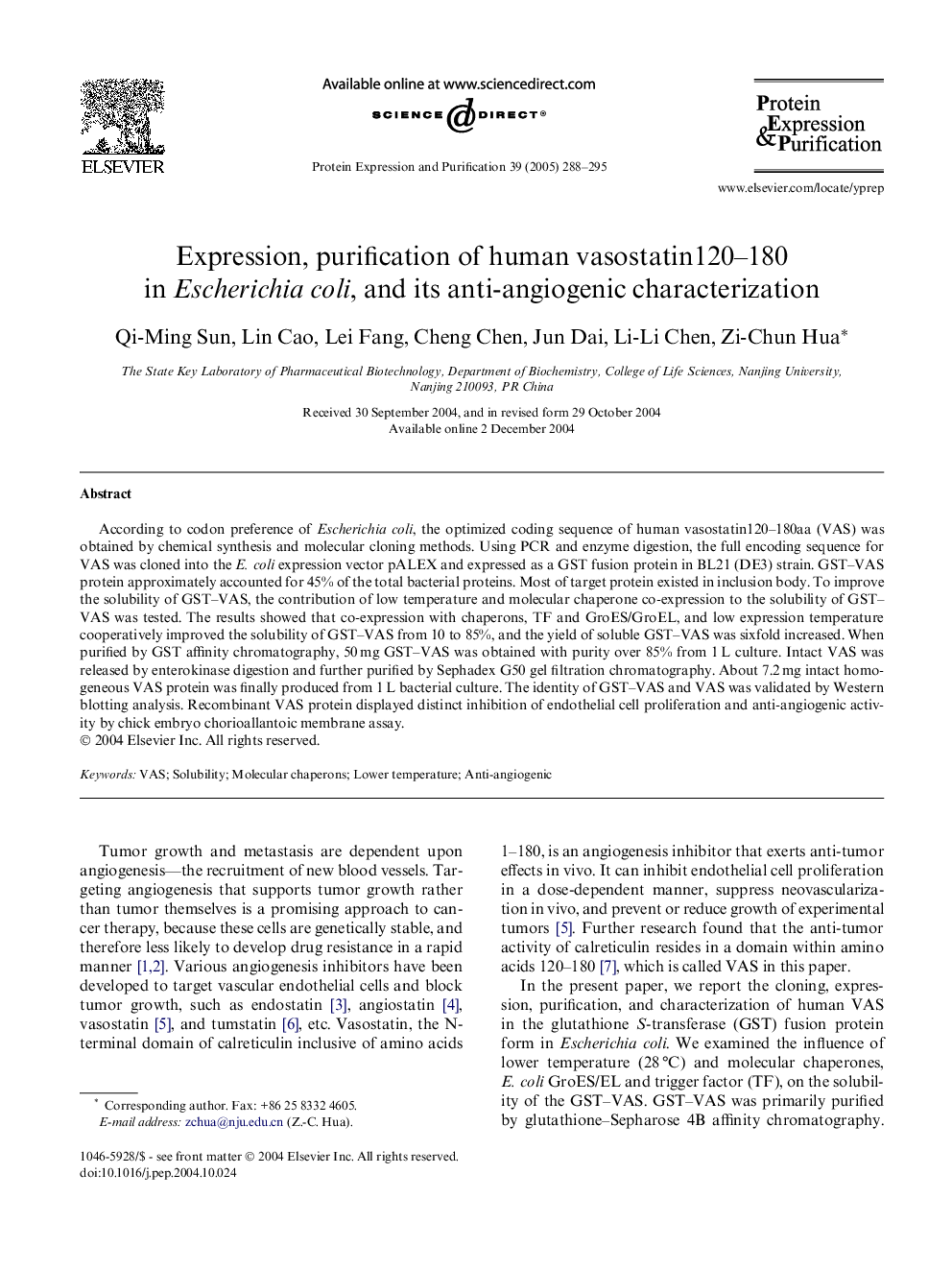| Article ID | Journal | Published Year | Pages | File Type |
|---|---|---|---|---|
| 10843564 | Protein Expression and Purification | 2005 | 8 Pages |
Abstract
According to codon preference of Escherichia coli, the optimized coding sequence of human vasostatin120-180aa (VAS) was obtained by chemical synthesis and molecular cloning methods. Using PCR and enzyme digestion, the full encoding sequence for VAS was cloned into the E. coli expression vector pALEX and expressed as a GST fusion protein in BL21 (DE3) strain. GST-VAS protein approximately accounted for 45% of the total bacterial proteins. Most of target protein existed in inclusion body. To improve the solubility of GST-VAS, the contribution of low temperature and molecular chaperone co-expression to the solubility of GST-VAS was tested. The results showed that co-expression with chaperons, TF and GroES/GroEL, and low expression temperature cooperatively improved the solubility of GST-VAS from 10 to 85%, and the yield of soluble GST-VAS was sixfold increased. When purified by GST affinity chromatography, 50Â mg GST-VAS was obtained with purity over 85% from 1Â L culture. Intact VAS was released by enterokinase digestion and further purified by Sephadex G50 gel filtration chromatography. About 7.2Â mg intact homogeneous VAS protein was finally produced from 1Â L bacterial culture. The identity of GST-VAS and VAS was validated by Western blotting analysis. Recombinant VAS protein displayed distinct inhibition of endothelial cell proliferation and anti-angiogenic activity by chick embryo chorioallantoic membrane assay.
Related Topics
Life Sciences
Biochemistry, Genetics and Molecular Biology
Biochemistry
Authors
Qi-Ming Sun, Lin Cao, Lei Fang, Cheng Chen, Jun Dai, Li-Li Chen, Zi-Chun Hua,
